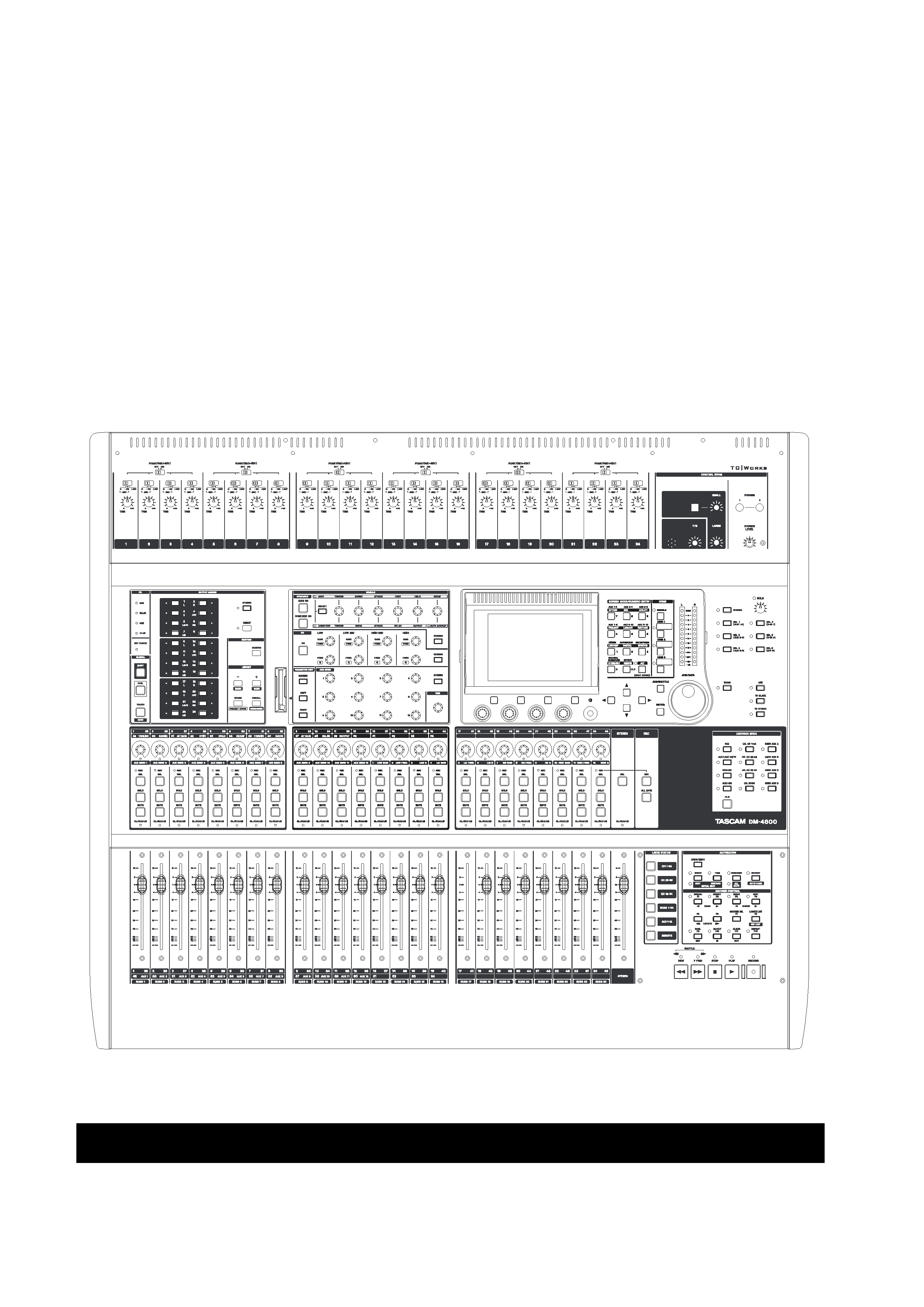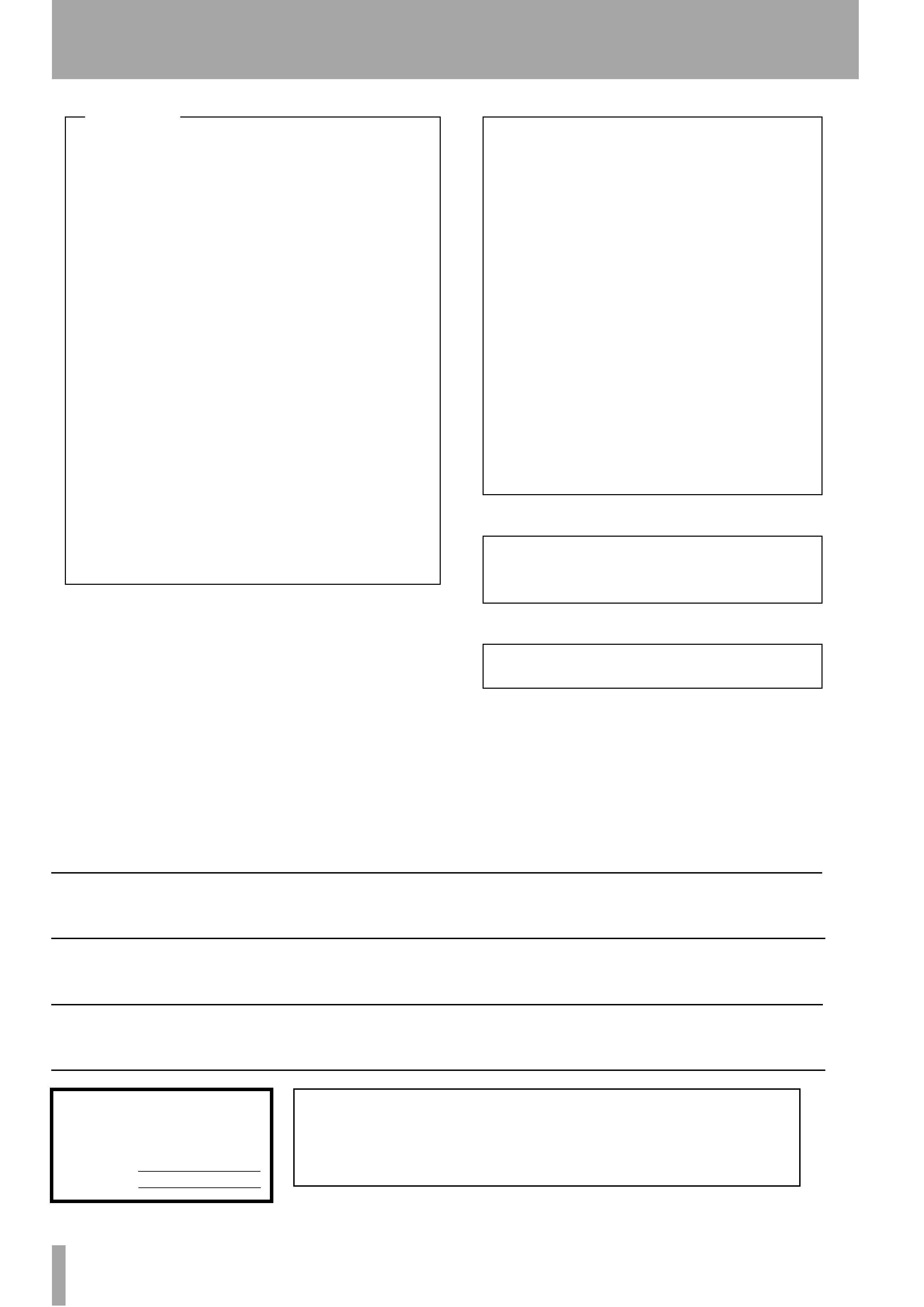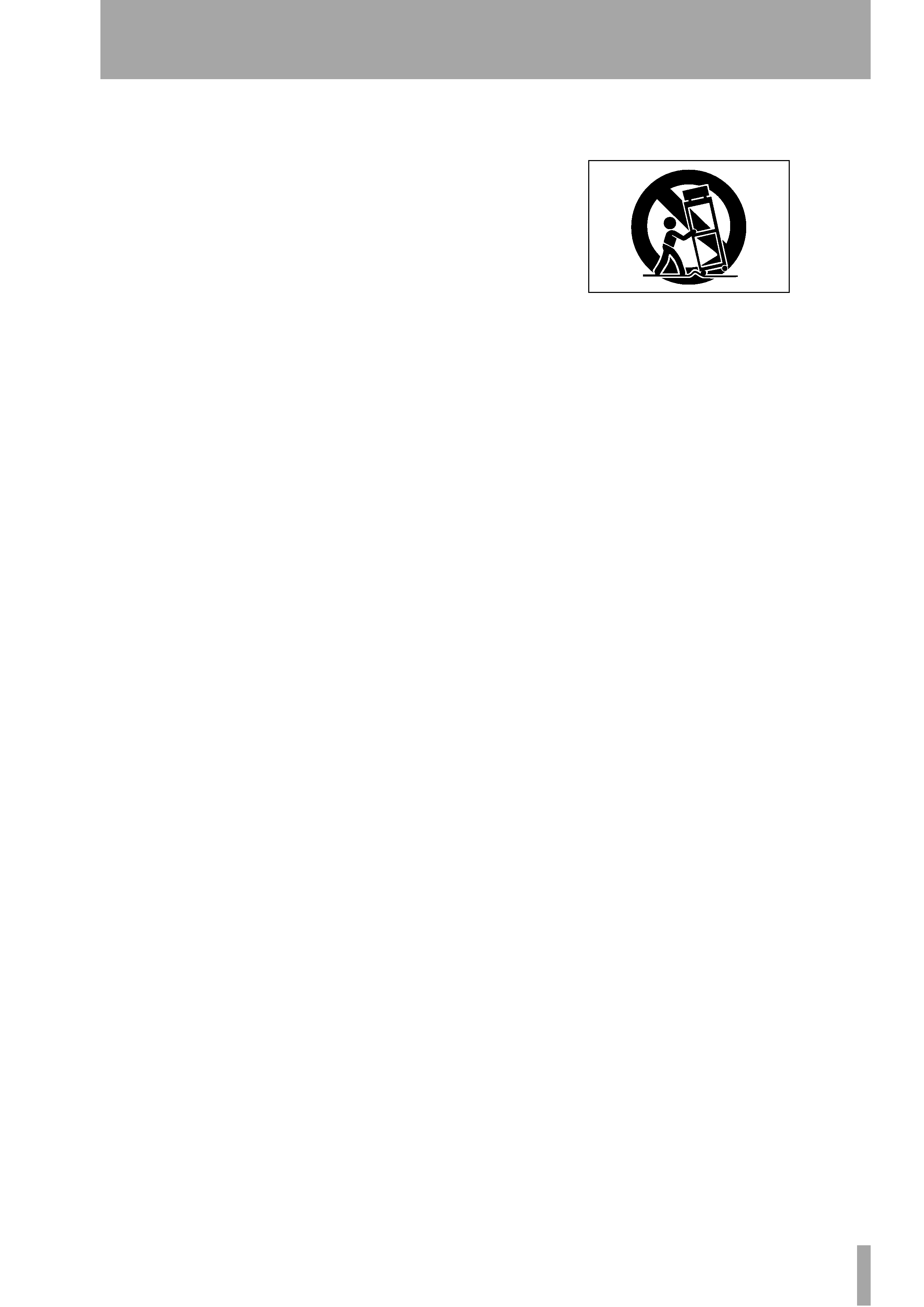
Contents
TASCAM DM-4800 User's Manual
5
Options.......................................................................42
SETUP screen .............................................................42
UPPER BAR DISPLAY ..............................................42
LOCATE DISPLAY mode.........................................42
ENCODER OPERATION mode ................................42
LIBRARY DIRECT KEY OPERATION........................42
OL/STATUS LED TYPE.............................................42
FADER SENSITIVITY................................................43
PREFERENCES ............................................................43
Fader Auto MODULE Select ..................................43
CH SOLO Key Auto MODULE Select .....................43
Select MODULE Return..........................................43
ST Link by SEL key..................................................43
SEL Key Follows Fader Layer Status ......................43
Meter Follows SEL key...........................................43
Automation fader OFF ..........................................44
Balance Level CENTER:0dB ....................................44
AUX Mute follows CH Mute .................................44
Encoder Mode Follows Current Screen ................44
Current Screen Follows Encoder Mode ................44
BUSS PAN Follows ST PAN.....................................44
BUSS Link/BUSS PAN Mode are Linked.................44
SOLO ...........................................................................44
MODE SELECT ........................................................44
SOLO LINK ..............................................................44
SOLO TYPE .............................................................44
INPLACE SOLO DEFEAT..........................................44
Utilities .......................................................................45
SWITCH utility...........................................................45
Talkback .................................................................45
Machine Control ....................................................45
Other functions......................................................45
Polarity ...................................................................45
GPI settings................................................................45
Making connections ..............................................46
Setting the GPI.......................................................46
GPI CONFIG section................................................46
Selecting the type..................................................46
ON/OFF setting.......................................................47
TIME EVENT section...............................................47
Selecting the port ..................................................47
Setting the time.....................................................47
Setting the type .....................................................47
ON/OFF setting.......................................................47
Editing the GPI EVENT LIST ...................................47
3 : Connections
Analog connections............................................49
Mic/line connections ...............................................49
Channel inserts ......................................................49
2 TR IN ....................................................................49
ASSIGNABLE RETURNS...........................................49
Analog outputs.........................................................50
STEREO OUT...........................................................50
ASSIGNABLE SENDS ...............................................50
Monitoring (LARGE (BAL) & SMALL (BAL)) ..........50
Monitoring (STUDIO (BAL)).................................. 50
Digital connections ............................................ 50
Digital audio I/O ...................................................... 50
TDIF I/O.................................................................. 50
ADAT "lightpipe" OUT & IN ................................ 50
CASCADE ............................................................... 50
Digital inputs and outputs ................................... 50
Digital I/O setup ...................................................... 51
Digital inputs ........................................................ 51
Mute Defeat.......................................................... 51
Stereo output........................................................ 51
Slot card configuration.................................... 52
IF-AN/DM............................................................... 52
IF-AE/DM ............................................................... 52
IF-TD/DM ............................................................... 52
IF AD/DM ............................................................... 52
IF-FW/DM............................................................... 52
IF-SW/DM............................................................... 52
Cascade configuration ..................................... 53
Master/slave setting.............................................. 53
Making the cascade connection........................... 53
Setting up the cascade........................................... 53
Using the cascade.................................................... 54
Interlocked settings .............................................. 54
Interlocked operations ......................................... 54
Other connections .............................................. 55
MIDI connections (IN, OUT and THRU)................ 55
RS-422 serial control terminal.............................. 55
GPI terminal .......................................................... 55
TIME CODE ............................................................ 55
WORD SYNC (IN and OUT/THRU)......................... 55
TO METER.............................................................. 55
FOOT SW ............................................................... 55
USB ........................................................................ 55
Power input .......................................................... 55
Clock setting........................................................... 56
Fs MODE ................................................................ 56
Checking the clock................................................ 56
Varispeed clocking................................................ 56
Clock change action ............................................. 56
Changing the clock............................................... 57
Clock phase ........................................................... 57
OUT SPEED ............................................................ 57
4 : Routing & assignment
Routing...................................................................... 59
Input routing............................................................ 59
Batch routing ........................................................ 60
Flipping the channels ........................................... 60
Loopback options ................................................. 60
Digital input selection .......................................... 60
Output routing ........................................................ 61
Slot card outputs .................................................. 61
Insert patching......................................................... 61
Send/return linking............................................... 62












